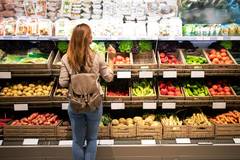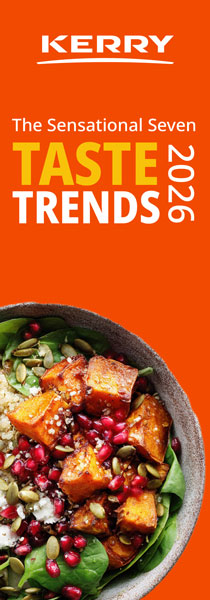RaboResearch: Chocolate prices forecast to ease but will remain above cocoa’s pre-crisis levels
A new RaboResearch report predicts that chocolate prices will ease following the record highs seen in recent years as cocoa markets have been battered by ongoing climate issues impacting harvests, supply chain volatility, and crop disease.
Although chocolate prices are expected to decline gradually, the report flags how there may be some respite on the horizon for manufacturers and consumers who have been facing sharp price increases since 2021.
However, chocolate retail prices will remain above pre-crisis levels in cocoa.
The cocoa and chocolate industry has been adapting to the wide range of challenging conditions and market dynamics in recent times.
Since 2021, chocolate retail prices in Western Europe have risen by more than 50%, notes the report. By mid-2025, Dutch chocolate retail prices had increased by 54% compared to 2021.
The report also flags how the gap between branded products and private labels has widened, with branded chocolate costing approximately €11 (US$13) more per kilogram than private label options. As a result, retailers have been offering more affordable alternatives to cost-conscious shoppers.
Maintaining margins without losing customers has been a balancing act.
Manufacturers have been employing strategies, such as “shrinkflation” (reducing pack sizes) and “skimpflation” (changing recipes to lower cocoa content, often replacing cocoa butter with cheaper fats or fillers) to protect margins without losing consumers.
Other strategies to mitigate the crisis have included some of the major players investing in novel cocoa cultivation techniques and cocoa-free innovations to reduce reliance on a single supply chain. This has led to technologies such as lab-grown cocoa and precision fermentation.
RaboResearch notes that in some European markets, these changes have altered products to the extent that they no longer meet the legal definition of “chocolate,” forcing brands to update product descriptions.
Gradual ease
Prices will remain high despite the predicted decrease.
Speaking to Food Ingredients First, Julia Buech, senior analyst, Consumer Foods for RaboResearch, says the worst cocoa shocks may be over, with cocoa futures expected to fall significantly by mid-2027. However, prices will remain above pre-crisis levels due to ongoing structural issues such as aging trees, crop disease, and climate swings.
While chocolate prices are projected to ease gradually, they will still be higher than in 2021. For example, a premium branded 100g chocolate tablet that retails at €3.95 (US$4.65) is forecast to drop to €3.80 (US$4.47) by September 2026 and to €3.30 (US$3.88) by September 2027. This is still well above the €2.93 (US$3.45) it would have been in 2021.
“The worst of the cocoa shock seems to be over, with futures expected to fall significantly by mid-2027. But cocoa is still set to stay well above historical norms, and that continues to affect chocolate prices.”
“Retail prices also lag behind commodity shifts due to supply chain dynamics and long-term contracts. On top of that, manufacturers’ and retailers’ pricing strategies, alongside broader cost pressures, are keeping prices elevated. So, while some relief is on the horizon, a full return to the old normal isn’t,” Buech continues.
The price hikes seen in the market in recent years have impacted consumer behavior.
“Premium chocolate appears to be holding up well, but mass-market brands are under pressure. The widening price gap between branded and private label products has become a huge incentive for consumers to switch, especially in today’s cost-conscious environment.”
“Retailers are responding by expanding their private label ranges, including more premium options that offer a compelling middle ground, balancing price and experience while helping build consumer loyalty.”
In terms of “shrinkflation” strategies Buech adds: “Shrinkflation is under growing scrutiny, and it’s getting harder to pull off quietly. In several countries, new rules now require warning labels when product sizes shrink without a price cut.”
“France, for example, has introduced mandatory shelf notices, and similar measures are being discussed elsewhere. That means brands will face even more visibility and pushback.”
“From a manufacturer’s perspective, these tactics are often a response to intense cost pressure. But skimpflation can be particularly risky because it affects taste and quality, which are central to brand trust. These strategies may offer short-term relief, but they carry longer-term reputational risks.”
What’s needed?
Buech says that in the short term, high prices are driving farm investment and new plantings, including in alternative origins beyond West Africa, which should boost supply. But structural issues in West Africa, such as aging trees, disease, and weather volatility, mean the market stays fragile for now.
“Looking beyond 2027 (toward 2030), the risk may actually flip: if all those new trees mature at once, we could see oversupply and sharp price corrections. Longer term, however, a more diversified origin base could make the market less vulnerable to regional shocks.”
“The European chocolate market is entering a new era of higher costs and persistent volatility, requiring agility and continuous adaptation from industry players. While the peak of chocolate retail price inflation may be behind us, the pressure remains, and the industry is hedging its bets for a resilient future.”















